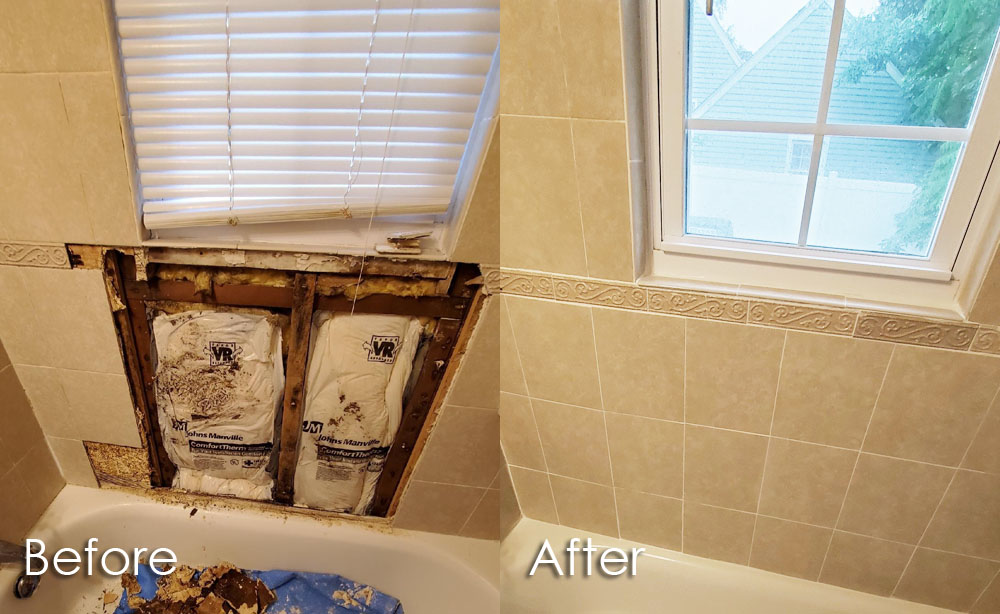Stopping Water Damage in the Bathroom
Stopping Water Damage in the Bathroom
Blog Article
Every person will have their personal idea on the subject of Common Causes of Water Damage in a Bathroom.

The restroom is incredibly susceptible for moist accumulation and possible water damages as a result of the regular use of water in it. This write-up uses basic inspection techniques to aid identifying water damages dangers.
The frequent use of water in the washroom makes it exceptionally prone for damp accumulation and also possible water damage. By examining it regularly, you can lower water relevant damages.
The following collection of assessments is easy to do as well as should be done as soon as in every 3 months in order to keep your washroom healthy and to stop prospective water damages brought on by the tub, the shower, pipeline joints as well as plumbing, sinks, cupboards, and the commode
Do not disregard doing these inspections as well as be extensive while performing them. Remember that these basic evaluations can conserve you a great deal of money by supplying early signs for water damage
Bath tub as well as Shower
The shower and also tub require unique attention as well as maintenance. Check the floor tiles as well as replace if split. Make sure that there is no missing out on grout in between the ceramic tiles. Inspect as well as replace fractured caulking at joints where the walls fulfill the flooring or the tub. Obstructed drains and also pipes problems will stop the bathtub from drying out and may show major issues beneath the tub. Seek advice from an expert quickly to prevent architectural damages. Take note of discolorations or soft locations around the bathtub walls as they might indicate an interior leakage.
Plumbing
Signs for water damages are hard to find since most pipes are set up inside the wall surfaces.
Pay special interest to floor covering and walls wetness and also stains as they may suggest an unseen plumbing trouble. Check wetness degrees in adjacent areas as well.
Sinks and Cabinets
Sinks as well as cupboards are revealed to moisture and humidity everyday and also are often overlooked. Examine frequently under the sink as well as on the kitchen counter over it. Fix any kind of drip in the catch as it may suggest drain issues. Browse the sink, sluggish draining pipelines might show an obstructed drain. Replace sink seals if they are broken or loose.
The Bathroom
The bathroom is a prone water joint. Examine the water lines and look for leakages around the commode seat, in the hose, and under the water tank. If you detect any signs of moisture on the floor around the toilet, check for leaks in the toilet rim and tank seals.
Be aware that hanging toilet bowl antiperspirants raises the opportunities for obstructions.
Water Damage Signs In The Bathroom To Avoid Cleanup
Musty smell
This is one of the easiest signs to catch because musty smells are so odorous. The damp, earthy, moldy smell should be a big red flag. The smell will develop when moisture gets trapped in surfaces, and begins to facilitate mold growth. Leaking pipes under cabinets, inside walls, and behind shower fixtures will cause moisture to stay trapped and not dry, which will lead to mold growth and spread. As soon as you notice any musty smells in your bathroom, have it checked for hidden water damage and cleanup signs.
Visible mold
If the smell isn’t there to give it away, sometimes you will actually see mold growth. Finding mold in your bathroom is a serious problem, because mold is very harmful to your health. By the time mold growth is visible, it also means that water damage has already occurred and been present for some time. The only way the mold problem can be resolved is to find the source of the moisture and get it stopped. To safely and adequately remove mold, you need to have professionals handle the remediation. Do not waste any time in getting mold problems addressed, fixed, and sanitized so that you can protect you and your family from the many respiratory symptoms caused by mold exposure.
Damaged floors
Bathroom floors should be able to withstand some exposure to water while still remaining in good condition. However, when excess exposure or water leaks occur, they will begin to damage even the most water-resistant flooring. If you notice any cracking, bubbling, staining, or warping on your bathroom floors, there is probably a water leak somewhere causing the distortion. If you notice areas of the floor have become softer, or even have a spongy feeling, there is probably damage to the subfloor. Subflooring is typically made up of plywood. When plywood is exposed to water or moisture, it will absorb it. Once it has become saturated, the weight of the excess water will cause the wood to swell and soften. Check the floors in your bathroom frequently to catch any of these sings before they lead to damaged subflooring.
Changes on walls
When water leaks behind walls, it will cause changes in the drywall. Peeling plaster, blistering paint, and soggy wallpaper are all good indicators that excess water is building up behind the wall. Water leaking behind drywall will cause it to swell and be soft to the tough. If you start to notice gaps along the trim of your walls, or where tile meets the wall, it could also be a strong indicator that there is a leak behind the wall. Any changes, distortion, or damage on the walls should be evaluated as soon as you notice it to prevent further water damage and cleanup.

As a serious reader about Common Causes of Water Damage in a Bathroom, I figured sharing that segment was worth the trouble. Sharing is caring. Helping people is fun. Bless you for your time. Kindly check up our site back soon.
Book Service Now Report this page